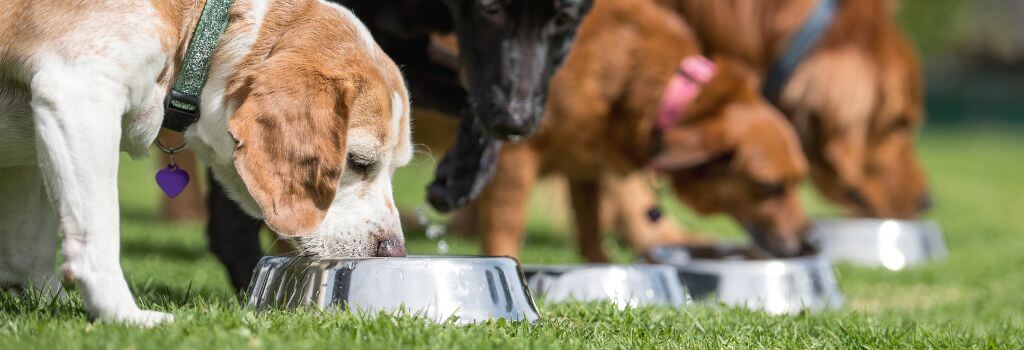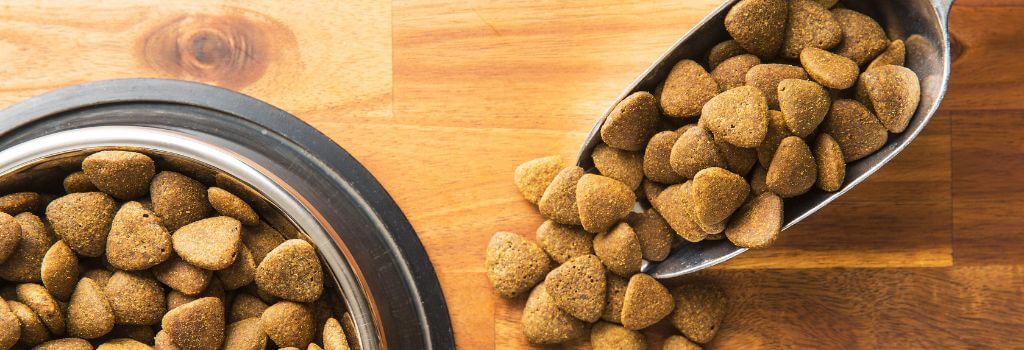When it comes to your dog’s health and happiness, canine nutrition and what you’re actually feeding your dog play major roles.
But, with so many options and the entire internet full of blogs and recommendations at our fingertips, how can pet owners sort the facts from the opinions? How can you differentiate what is really important on a website and what is just marketing and buzzwords that make us feel better?
That’s where the guidance of a trusted veterinarian comes in. While choosing the best dog food for your canine companion can seem like a daunting task, it can actually be very straightforward when you know exactly what to look for and what questions to ask. To help pet owners avoid the information overload that often comes with researching dog diets online, we’re going to share our recommendations for deciphering product labels and descriptions to help you find the right diet for your dog.
The Shocking Truth About Dog Food and Diets
When it comes to choosing the best dog foods or types of diets for dogs, many pet owners have actually been misinformed. When pet owners are given misinformation through pet food ads, online recommendations, and product reviews from other pet owners, they’re put in a tricky situation where they don’t have all of the correct information they need to make an informed decision about what diet their dog should be eating based on their age, activity levels, nutritional needs, and more.
The two most shocking truth about dog food and diets are:
- The ingredient list does not give you any information about how absorbable or what level of quality the individual ingredients are. The ingredient list itself does not provide any information about whether the individual micronutrients within each ingredient, when mixed together in the proportions in that food, actually meet the biologic needs of the animal for which the food is designed at that specific life stage.
- The guaranteed analysis on the food label does not relay actual values of nutrients. It relays some nutrients as a maximum and some as a minimum, however it does not state exactly what each micronutrient level is within the food.
So, how is a responsible and caring pet owner to choose a dog food, if not based on an ingredient list or listed protein level?
Fortunately, a few simple tips are able to help you see through the marketing and to look for specific information on a pet food site.

Beware of Buzzwords on Dog Food Brands
First, keep in mind that many buzzwords are designed to make us believe foods are healthy. Marketing specialists are experts at tugging our heartstrings and making us feel like if we truly love our pets, their diet must resemble ours. Human-Grade, Regenerative, Sustainable, Holistic, Premium, Gourmet, All-Natural, Contains Real Meat, and Our Family Based Brand are all examples of these types of descriptors that have no legal definition or true value for a pet.
All pet food with meat contains “real meat”. There are strict regulations about what can and cannot go into dog foods and diseased meat cannot. In balanced pet food brands, every ingredient is present with a purpose. For example, corn is actually broken into its component parts to provide the essential fatty acid, protein or carbohydrate portion depending on what role its component is fulfilling. It is a myth that corn is simply a filler. No pet food contains fillers, according to AAFCO definitions. It doesn’t make sense, from an expense standpoint, to include an ingredient with no purpose in a formulation. Companies would not spend the money to place an extra ingredient in their food. Pet food allergies are also not as common as inhaled allergies and definitely not as common as commercials make us believe. When food allergies are present, the number one allergen is actually the protein source, not grains. Grains are actually essential for processing taurine and without them, many dogs have developed early onset diet-related dilated cardiomyopathy, a deadly form of heart enlargement causing congestive heart failure.
Understand the Reality of Raw Diets for Dogs
Finally, there is no scientific basis for feeding a raw diet. In the same way we are domesticated and have evolved, our pets have, too. Eating raw has no inherent benefit over cooking food to eliminate pathogens. As our pets are no longer wild animals and their biological intestinal bacterial load has evolved, foods now have many natural preservatives, such as Vitamin E (labeled tocopherol) to prevent spoilage. Your domestic doodle is not a wolf!

Use Trusted Sources When Selecting the Best Dog Food for Your Pet
When you look at a diet website, there are several things you should be looking at and a few questions you should be asking:
Is There a Board Certified Veterinary Nutritionist on Staff?
Many sites will say “made in consultation with a Veterinary Nutritionist”, which means a nutritionist with specialized training is NOT “on staff” supervising all formulations and performing feeding trials. The company may have spoken to one to help with designing their foods initially, but there is no Nutritionist regularly advising and constantly evaluating their diets for in house quality control.
Does the Company Perform Feeding Trials?
Excellent companies perform lifetime animal feeding trials to assure their foods meet the needs of the animals for which they are labeled.
Do They Have Their Own Manufacturing Plant?
Many smaller and boutique label pet foods utilize a co-packer who manufactures many foods under different labels. This takes them out of the chain of responsibility for safety issues. Responsible companies supervise their processes start to finish and have multiple internal safety controls on-site within their plants to assure quality control in every single batch.
Does the Food Contain Regular Grains?
Case after case presented to the cardiology services has demonstrated that boutique, exotic, untrialed and grain free foods may be responsible for diet-related cardiomyopathy. Adding taurine as a supplement does not negate the inhibition of its absorption. There is no basis for “ancient grains” or grain free diets.
Is the Food Raw or Freeze Dried?
Raw and freeze dried food carries any bacteria with it that were present at the time the meat was harvested. If you would not eat it raw, your domesticated dog should not either. Not only may your pet get sick, but it is also a household risk for humans handling raw diets.
Make an Informed Decision About Your Dog’s Diet
Selecting the right diet for your dog is not just about finding the most popular brand or following the latest trend; it’s about ensuring your pet receives balanced and complete nutrition tailored to their specific needs.
With the overwhelming amount of information available, making an informed decision can be challenging. This is why it’s crucial to work closely with your veterinarian, who can provide guidance based on scientific evidence and your dog's unique health needs. Together, you can navigate the complexities of pet food labels, avoid marketing traps, and choose a diet that supports your dog's overall well-being. Remember, proper nutrition is the foundation of a healthy and happy life for your dog!
If you have questions and you'd like to reach out to us, you can call us directly at (480) 613-9277, or you can email us at [email protected]. Don't forget to follow us on social media Facebook, Instagram.

